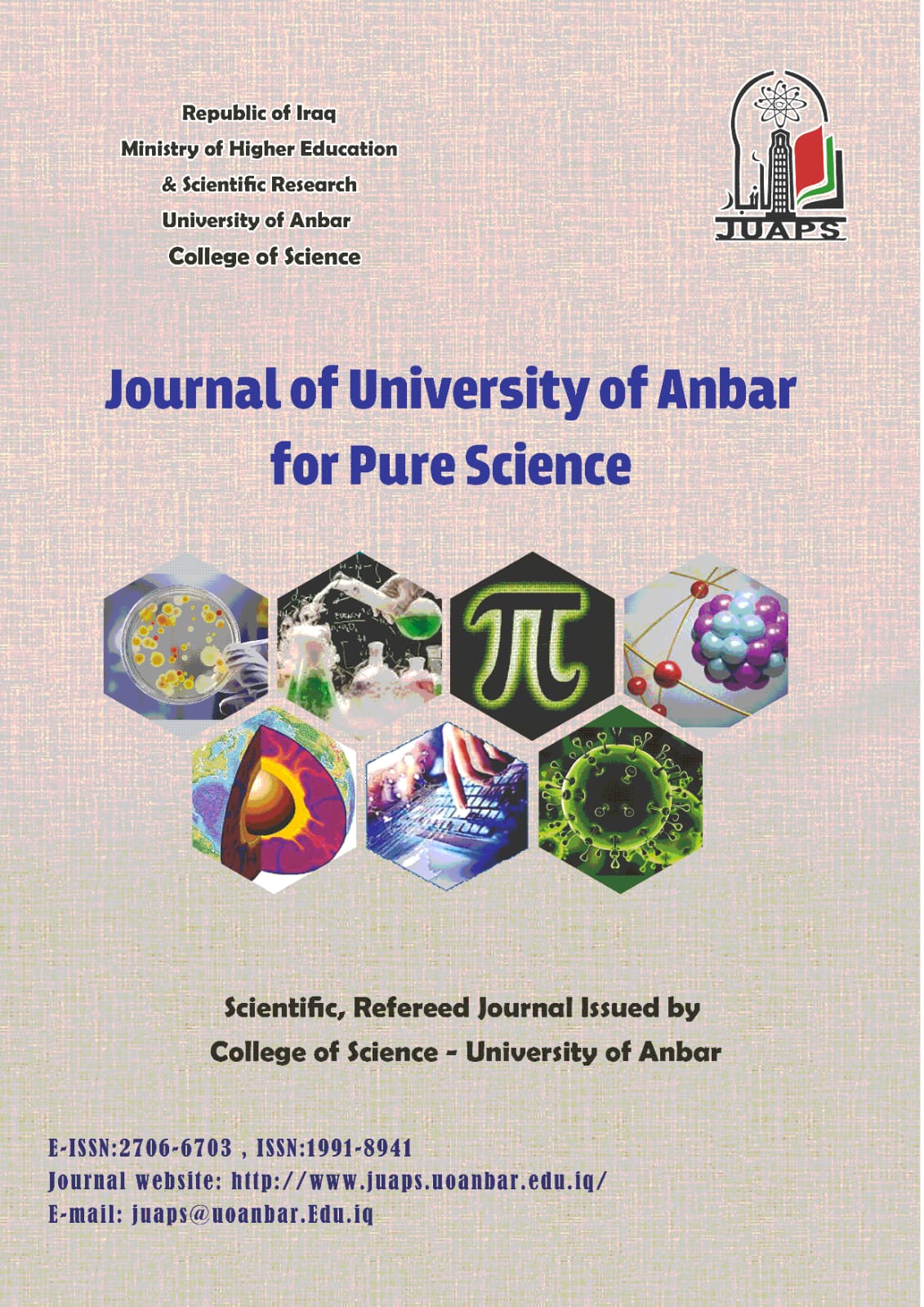Abstract
The current study aims to study biodegradation for plastic waste as one of the ways of treatment of plastic pollution by using isolated bacterial isolates from plastic waste collection and landfill areas in the city of Ramadi and surrounding areas during different periods. Diagnosis of bacterial isolates was performed based on phenotypic and physiological tests as well as testing on the VITEK 2 system, isolates were selected that go back to the type Pseudomonas sp. and Streptomyces sp. Bacterial isolates have been studied for its ability to breakdown plastic waste used in the manufacturing of drinking bottles and shopping bags by collecting samples of plastic waste and assured they are washed and sterilized perfectly. Another experiment was conducted through a second decomposition (A carbon deficient) medium as well as the second decomposition medium contains some chemicals that are thought to help accelerate the process of decomposition. Results showed that the highest polyethylene breakdown occurred due to isolate P1 (Pseudomonas fluorescens) by the degradation rate 8.83% on the first decomposition medium and 30.5% on the second decomposition medium, while the degradation rate to isolated P4 (Streptomyces) was 4.83% on the first medium and 19% on the second medium. The genetic study results showed existence of the enzyme PETase gene on Pseudomonas fluorescens chromosome in an expected size 119bp and it was absent on plasmid
Keywords
Biodegradation
pet
Plastic waste.
Plastics
Pseudomonas fluorescens
Streptomyces sp.
Abstract
استهدفت الدراسة الحالية إلى دراسة التحلل الحيوي للنفايات البلاستيكية كطريقة من طرق معالجة التلوث البلاستيكي عن طريق استخدام عزلات بكتيرية معزولة من مناطق تجميع وطمر النفايات البلاستيكية .عُزلت 164 عزلة بكتيرية من 64 عينة تربة ومخلفات بلاستيكية تم جمعها من مناطق تجمع وطمر النفايات البلاستيكية في مدينة الرمادي والمناطق المحيطة بها وخلال فترات زمنية. أجريت عملية تشخيص العزلات البكتيرية بالاعتماد على الاختبارات المظهرية والفسلجية فضلاً عن اختبارها بنظام VITEK 2، وتم انتقاء العزلات التي تعود إلى نوع Pseudomonas sp. و Streptomyces sp. تم دراسة قابلية العزلات البكتيرية قيد الدراسة على تحليل النفايات البلاستيكية المستخدمة في تصنيع قناني الماء، وأكياس التسوق عن طريق جمع عينات من النفايات البلاستيكية والتأكد من غسلها وتعقيمها ثم أعيدت التجربة على وسط تحلل ثاني يختلف عن وسط التحلل الاول بعدم احتواءه على أي مصدر كاربوني للبكتريا بخلاف قطعة البوليمر فضلاً عن احتواء وسط التحلل الثاني على بعض المواد الكيميائية التي يعتقد أنها تساعد في تسريع عملية التحلل. بينت النتائج أن أعلى تفكك لمادة تيريفثالات متعدد الإثيلين حصل بواسطة العزلة P1 التي تعود للـ Pseudomonas بنسبة تحلل بلغت 8.83% وكانت نسبة تحللها على وسط التحلل الثاني 30.5% بينما كانت نسبة تحلل P4 العائدة للـ Streptomyces على وسط التحلل الأول 4.83% وعلى وسط التحلل الثاني بلغت نسبة التحلل 19%. من جهة اخرى أظهرت نتائج الكشف الوراثي لصفة انتاج الإنزيم PETase في بكتريا Pseudomonas fluorescens وجود الجين المشفر على الكروموسوم البكتيري بحجم 119 زوج قاعدي وعدم وجوده على البلازميد .
